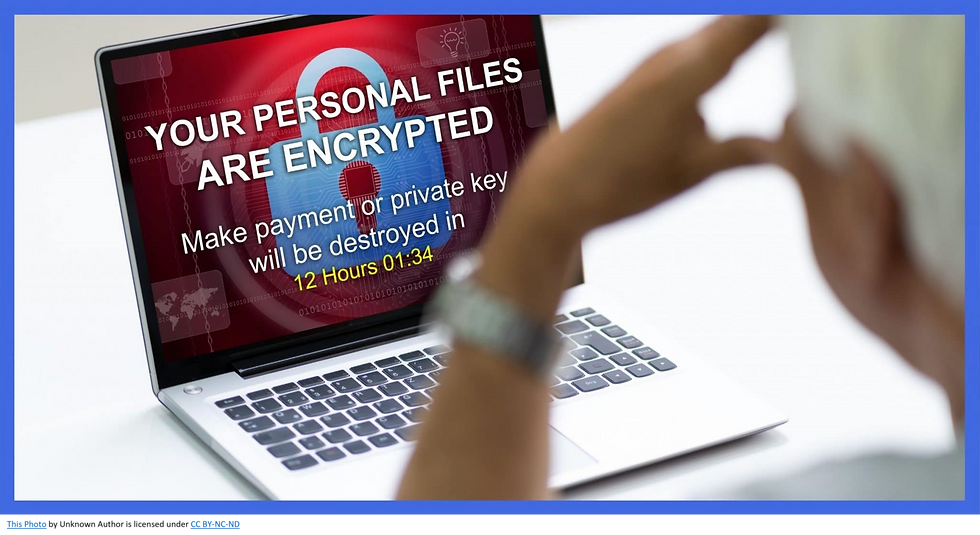One of the biggest assumptions made by charities around cybercrime is that they won’t be affected as they don’t have anything of value to hackers and scammers.

If that were true it doesn’t explain the fact that over a third of our regions’ charities have fallen victim to a cyber-attack during the course of the pandemic. Here we will look to explore what charities should have in place to reduce the likelihood of falling victim to an attack.
Why are charities a target for scammers and hackers?
You might well ask this question since charities are not cash rich organizations.
But all charitable organizations hold personal records and other sensitive data which if publicised could damage the reputation of the charity, impacting on their ability to raise money for their good causes in the future.
Couple this high value data with the fact that almost 50% of charities have very basic or non-existent cyber security protocols and it becomes easier to understand why they are such a high value target. Charities exist because the public trust that most of the money that they give will go to support something that they believe is a worthwhile cause. Loss of this trust could critically impact all affected charities future operations.
So, what is ransomware?
Simply put this is a malicious attack against a network where the criminals get access to data and encrypt it, potentially stealing it first and then threaten to delete it. The criminals will then demand a payment for the return of the data.
Imagine how this could affect your business – sensitive financial data relating to your customers, suppliers or even your own company, commercially sensitive data relating to staff, the operating of your business or contacts with others - these could all be compromised or lost.

The reality is that ransomware is now viewed as a business model and many entities behind these attacks will present themselves as being on the same side as the victim. So, in return for the payment your business will often be supported through a process which will return the data that has been encrypted / stolen. It is worthy of note that paying the ransom does not guarantee the return of the data and certainly does not guarantee that it won’t be sold on or published at some point in the future. Also, your network will still be infected, and you are more likely to be targeted again in the future.
The paying of the ransom has moral and ethical undertones that may not be immediately apparent when you are faced with such an attack. Consider the fact that you may be financially supporting terrorists or criminals by paying the ransom.
Can you protect yourself from these attacks?
Ransomware is always preceded by an attack on the network itself, commonly through use of stolen credentials, a phishing e-mail or brute force attack. These attacks are increasing in complexity and sophistication meaning that defence against these dark arts needs continual review. But the key points for protection to remember are:
Make your network resilient and practice good cyber hygiene using Cyber Essentials (CE) principles. As a member of the ECRC we will guide you through the process of preparing for Cyber Essentials as part of our Little Steps Program. Once completed we will refer you to one of our partners to complete the certification process. And successful accreditation brings with it £25000 worth of Cyber Insurance.
Make sure Staff Awareness Training is up to date – spotting a phishing e-mail early will prevent a lot of pain further on down the line. Have a look at our affordable Staff Awareness Packages that are available – high quality and provided by highly trained undergraduate students.
Make sure all staff know the symptoms of an ongoing ransomware attack and respond quickly to it using a prepared incident response plan. You can download a template from our site.
Identify common points of failure across the network – patch vulnerabilities and restrict access from malicious sites and IP addresses – speak with your MSPs about this and don’t assume that it will be done automatically. The important thing here is to understand where your main vulnerabilities are, then deal with them first.
What next?
The impact of a successful attack against your website or network can be catastrophic and lead to website downtime, loss of data and permanent loss of reputation. But all is not lost.
Here at the centre, we would recommend that you consider
Joining our community for free . You will be supported through implementing the changes you need to make to protect your organisation.
Consider how we can help your own supply chain and customers – it would be great if you could look at promoting the centre on our behalf and we have a referral pogram to say thank you. Why not take a look or contact us to find out more.
Reporting a live cyber-attack 24/7
If you are a business, charity or other organisation which is currently suffering a live cyber-attack (in progress), please call Action Fraud on 0300 123 2040 immediately. This service is available 24 hours a day, 7 days a week.
Reporting a cyber-attack which isn't ongoing
Please report online to Action Fraud, the UK's national reporting centre for fraud and cybercrime. You can report cybercrime online at any time using the online reporting tool, which will guide you through simple questions to identify what has happened. Action Fraud advisors can also provide the help, support, and advice you need.
Alternatively, you can call Action Fraud on 0300 123 2040 (textphone 0300 123 2050).


Comments